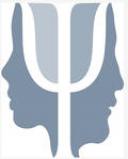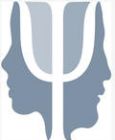Education
Feminist Pedagogy in the Classroom
Teachers can employ feminist teaching strategies to encourage critical thinking.
Posted February 10, 2015
By Dr. John D. Rich, Rameeka Manning & Brionne Cage
One way to integrate critical thinking into classrooms is through feminist teaching. But, what is feminist teaching? How can educators use feminist teaching as a means to bring critical thinking to classrooms? In her 1992 article, Jean Shackelford states that feminist teaching was a name used during the 1980s to blend a wide variety of teaching methods in the classroom that did not have a Eurocentric white male dominance perspective. This style was adopted by feminists in women’s studies programs, and then later adopted by men and women teaching in different fields. Susan Feiner’s and Barbara Morgan’s 1987 work suggests that there is little to no inclusion of race or gender in introductory course textbooks, and—when included—the material is usually stereotypical or biased. The use of feminist teaching introduces perspectives that are different from the normative way of looking at the world. Critical thinking involves the ability to think outside the box of general belief. By creating a sense of disequilibrium in the students’ minds, a teacher can provide activities to model critical thinking. There are many ways to accomplish this goal, but in this article, we will discuss strategies that can be used with course content and materials; classroom environment and attitudes; and assignments.
Course Content and Material
According to Shackelford, one way to integrate critical thinking into classrooms through feminist teaching is with a careful selection of course content and materials. Educators should include material that allows students to examine (as well as create) information and—just as importantly—to examine different ways of discovering said information. Research papers where students reflect on and critique a scholar’s work cannot only enhance students’ understanding of the work but can also get students to practice the art of skepticism.
Course content and material should enhance problem solving skills, which in turn will teach students how to create good questions. The use of these questions can spark dialogue about things such as political implications of policies. According to Burbules and Berk (1999), the ability to reflect on one’s own perspectives and assumptions is one important aspect of critical thinking. However, no one can reflect alone. Therefore, reflection is most effective when combined with dialogue.
Classroom Environment
In traditional institutions of higher education, instructors have power over a class from the moment class rosters are received and until final grades are handed in. According to Shackelford, there is no way to escape the authority that comes with the roster. However, it is possible to develop different methods besides a “teaching of dominance.” Instead, instructors can promote a classroom environment that relies on democracy. In doing this, instructors must be aware of the diversity of the student body and seek to incorporate each individual into discussions for obtaining diverse input.
Teachers can establish a program of open discussion for students to provide input into the course. This allows students to enter into conversations and explore each other’s ideas as equals. “This program of open discussion can also include input into the processes, goals, content, course design, and even evaluation methods.” (p.573) Personal characteristics, as well as numerical data, influence knowledge about economics, as well as most disciplines. Dialogue can begin to inform students about how knowledge is formed and reveals the importance of questioning, supporting, or documenting different ideas. According to Shackelford, conducting a classroom in this type of environment not only enables students to learn the material and arguments of the discipline, but it also encourages critical insights and questions, which will help develop critical thinking and inquiry skills.
Assignments
Developing assignments, discussions, and other activities that focus on discovery and encourage students to use their personal experience is a challenge many instructors find daunting. According to Shackelford, an example of this can be seen in writing assignments. Writing assignments play an essential role in encouraging both student learning and the exploration of ideas.
Writing assignments may include essays, abstracts, responses to inquiries, data collection, analysis, and journals in which students write to learn rather than to perform or demonstrate knowledge. Collaboration and peer review of this writing encourages students to become responsible not only for themselves but also for each other. This promotes a sense of community within the classroom and places a value on the evolution of knowledge.
In very large lecture sections, instructors can periodically “check in” with students. This can be done by pausing to allow short writing tasks such as making a list of what they see the main point of the lecture to be, summarizing the lecture, or assigning a free write about issues raised in the lecture. According to Rivard (1994), writing is not only important for critical thinking or learning but also for encouraging personal responses, offering clarification, and helping students in the construction of knowledge.
In conclusion, Shackelford believes that feminist teaching can give instructors a method for encouraging creativity and critical thinking. Through the course content and material, the classroom environment, and specific assignments, instructors can model a feminist perspective to encourage students to explore economics or any other discipline actively and critically.
References
Berks, R. & Burbules, N. (1999). Critical Thinking and Critical Pedagogy: Relations, Differences, and Limits. Critical Theories in Education. http://faculty.education.illinois.edu/burbules/papers/critical.html
Rivard, L. (1994). A Review of Writing to Learn in Science: Implications for Practice and Research. Journal of Research In Science Teaching. Vol. 31. No. 9, 969-983
Shackelford, J. (1992). Feminist Pedagogy: A Means for Bringing Critical Thinking and Creativity to the Economics Classroom. Alternative Pedagogies and Economic Education. Vol. 82. No.2, 570-76.




